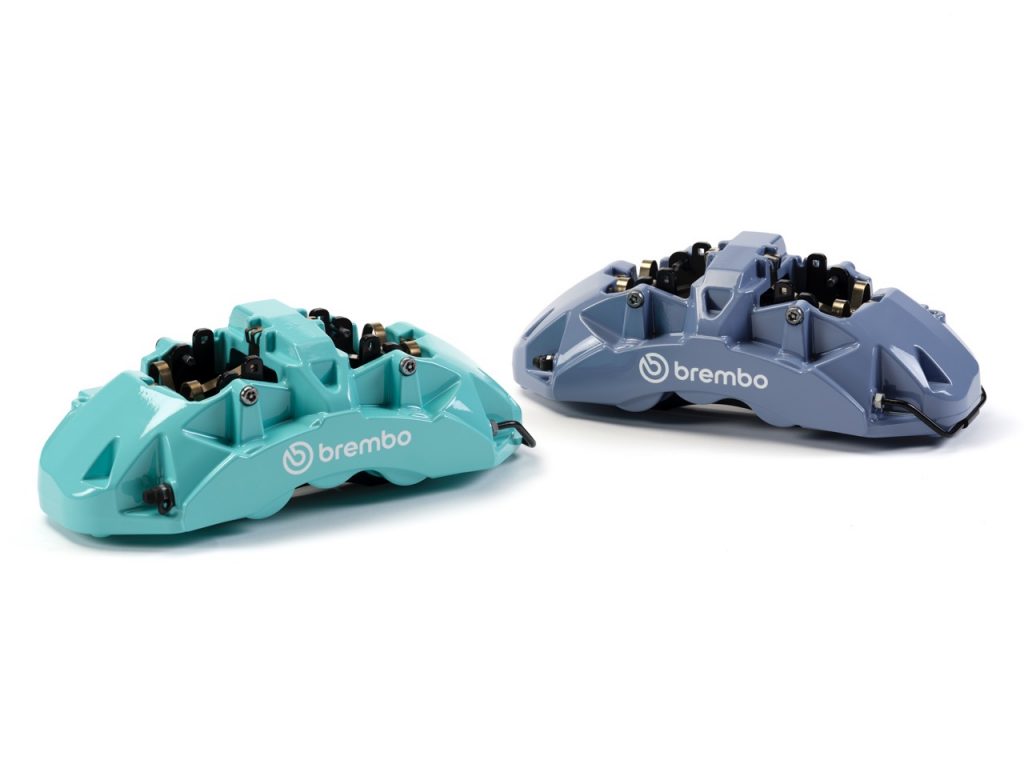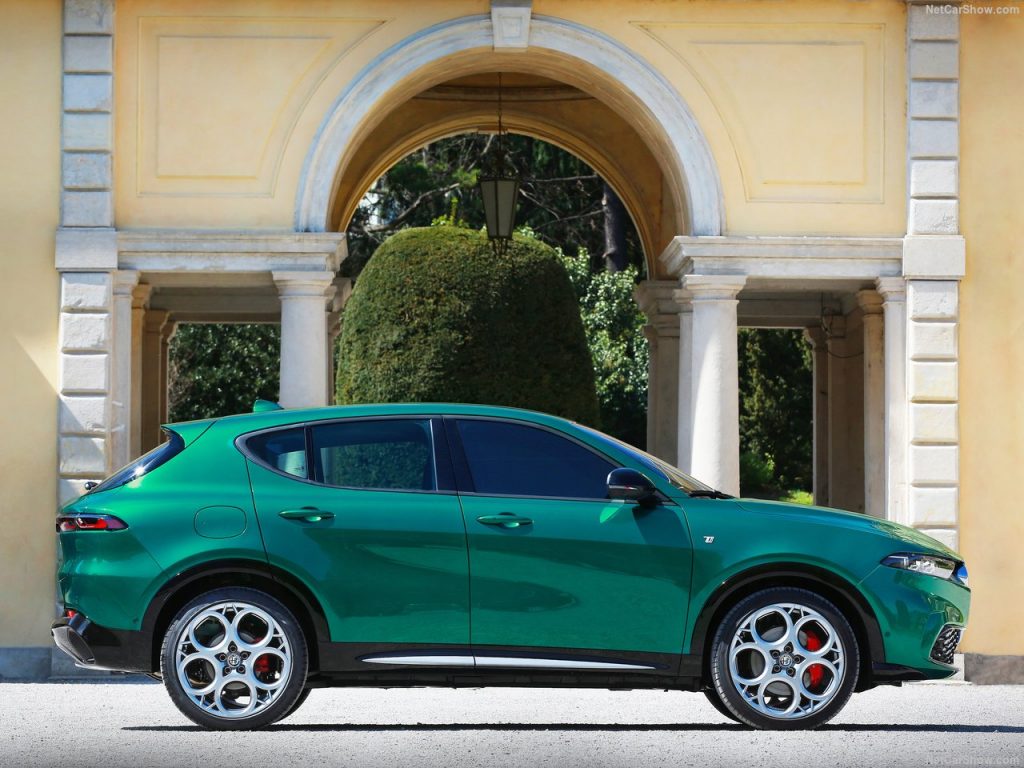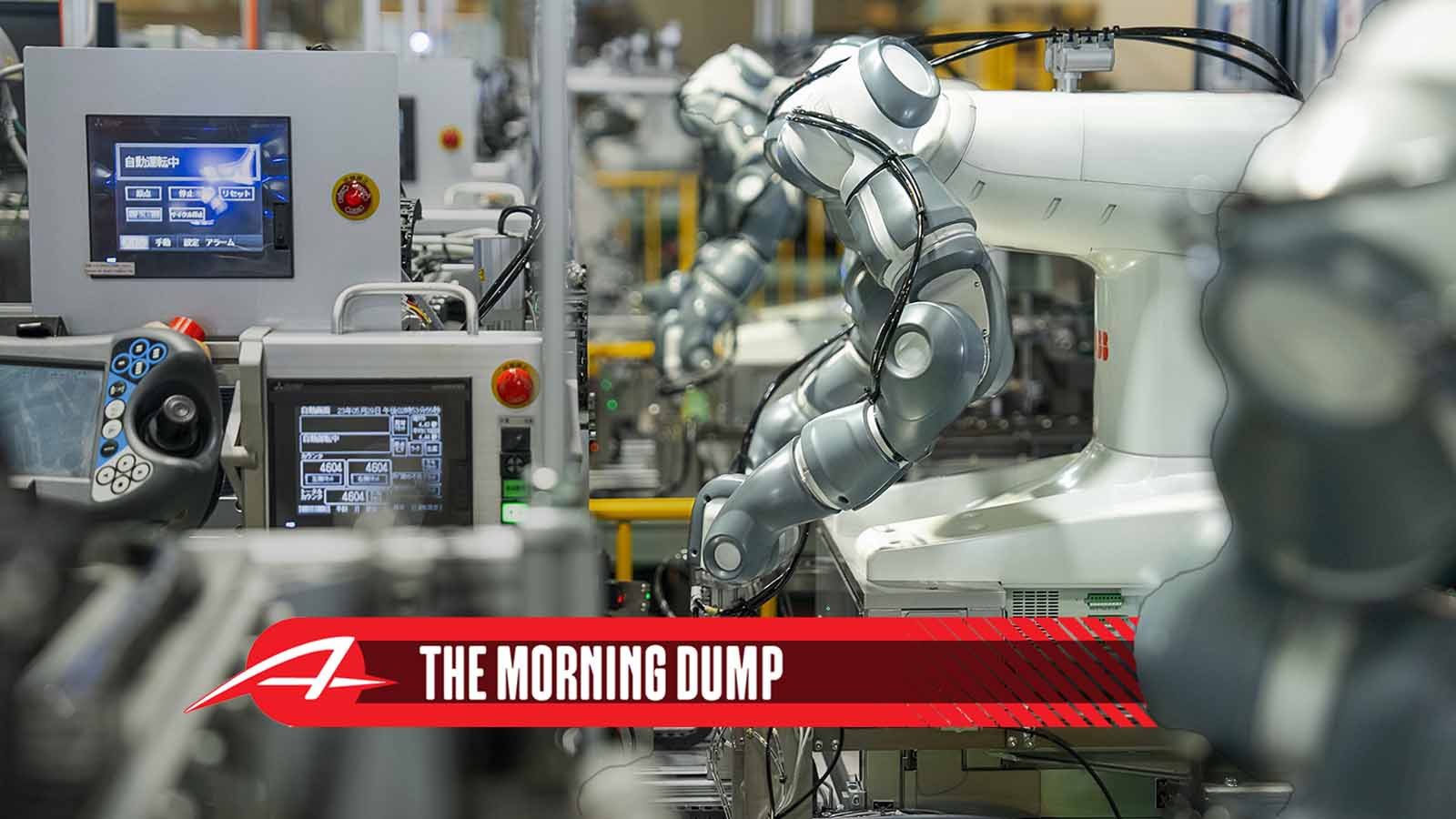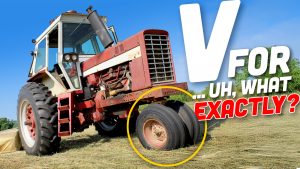One of the biggest advancements in modern cars is not a specific propulsion technology, but a materials and packaging story. Cars are getting heavier, but not as heavy as you’d imagine, given all the added safety equipment. You can thank the use of aluminum and other materials for this.
This is another Morning Dump where I talk about tariffs, because this is a tariff story. And an environmental one. There’s a decent chance that it might just be cheaper, in the long run, to let cars get a little heavier.
Here’s a heavy bit of news if you’re in charge of sales for Tesla: the company had another bad month, losing out to BYD in Europe, again. It’s also losing out to Renault, which is kinda killing it with its affordable EVs.
Stellantis had a better month, but it was not enough to prevent the company from slowing down its European production.
The Industry Has To Do Something About The $188 Billion Tariff Hit Coming

Automakers will surely continue to absorb some of the expected tariff costs. How much is another question. According to the Center for Automotive Research, the total cost to the automotive industry from all the various materials, parts, and vehicle tariffs will be about $188 billion (and that’s the conservative estimate).
In addition to eventually passing that cost onto the consumer, one of the ways automakers could save money is just by not trying so hard to make cars lighter. That’s at least one proposal coming, according to Automotive News:
Lightweighting has been crucial for automakers looking to reach global fuel economy targets and emissions regulations. A 10 percent reduction in vehicle mass can lead to a 6-8 percent improvement in fuel economy and greenhouse gas emissions, according to a 2024 study conducted by researchers at the National Renewable Energy Laboratory and the U.S. Department of Energy.
While global standards aren’t going away, the Trump administration has signaled it is scaling back U.S. environmental regulations and reversing much of the Biden administration’s pro-EV policies.
The federal government’s $7,500 EV tax credit expires after Sept. 30. In July, the EPA proposed rescinding its 2009 legal opinion that greenhouse gas emissions harm human health, which would end limits on vehicle tailpipe emissions.
“One big thing going on is there are no more carbon credits to buy,” AutoForecast Solutions CEO Joe McCabe said at the Center for Automotive Research’s Management Briefing Seminars held Sept. 15-17 in Detroit. “Now you just found yourself a couple hundred million dollars of revenue to throw back in the mix.”
It’s generally understood that it’s more expensive to make a lighter part (perhaps using aluminum and some sort of composite as opposed to just steel). Now that companies need to make cars cheaper and there’s less pressure to make them efficient, it’s a potentially viable trade-off.
Of course, this isn’t a change you can make overnight. Trying to go back to certain materials and older designs is going to take time. There’s also the risk that you’re making a vehicle for one country, and other places still maintain their regulatory environment.
Making cars lighter is better for safety, better for the environment, and better performance. It may not be better for the bottom line anymore.
One interesting solution is to use recycled materials, which, if produced in a tariff-friendly way, could reduce cost and be better for the environment. In a fun coincidence, I got an email from Brembo this morning saying that’s exactly what they’re doing, with the first-ever caliper made with 100% recycled aluminum.
After extensive scouting and testing, Brembo found the perfect match: an alloy made entirely from recycled aluminum. Using this alloy, CO₂ emissions across the entire lifecycle of the caliper can be reduced by 70% compared to a conventional alloy.
The shift to the new material demanded a re-evaluation of the product and an update to the manufacturing process. A comprehensive redesign and reindustrialization effort was launched to ensure the new solution could be scaled globally across all Brembo plants, delivering the highest quality and performance.
Brembo produces equipment all over the world, so I did ask a spokesperson specifically where the aluminum was being recycled.
The recycled alloy is sourced regionally, which aligns with Brembo’s strategy of sourcing near factories and producing parts near our customers’ factories. The alloy will be rolled out to global markets.
Makes sense.
Europe Continues To Be Tough For Tesla, Better For BYD

Sales of BYD EVs in Europe were up 201% year-over-year in August of this year. Tesla? Sales were down 36.6% over the same period, which means that BYD is selling more cars in EU countries than Tesla.
You can see the full sales release from the ACEA, but it shows that it’s not impossible for BYD to pass Tesla in sales in Europe this year. At the very least, it’ll be close.
And it’s not like people in Europe aren’t buying electric cars. The overall market was relatively flat in August, but BEVs were up 30.2%, hybrids were up 14.1%, and PHEVs were up 54.5%.
Now that the revised Model Y is entirely out, I think it’s safe to say that Musk’s antics, combined with growing competition, have clearly had an impact.
Check Out The Renault 5

Renault Group was up 8.1% year-over-year in August sales, with the Renault brand edging up 5.7%.
As Autocar points out, a lot of Renault’s success has come from the “brilliant” Renault R5 E-Tech. Will the company abandon the model? Of course not!
It would be a “massive mistake” for Renault not to replace the 5 in around five years time, and the next-generation supermini must be “very carefully” evolved to preserve its wide appeal.
That’s according to chief marketing officer Arnaud Belloni, who told Autocar that the reborn Renault 5 has made a huge impact on the French brand’s market footprint and public perception.
The 5 has only been on sale for around a year but is already one of the most popular EVs in Europe and is playing a pivotal role in attracting new customers to the Renault brand, with an 84% conquest rate in the UK.
It’s almost as if people will buy EVs if you make them fun and affordable…
Stellantis Is Pausing Production In Europe To Adjust To A ‘Challenging Market’

Stellantis had a decent August, growing 3.4%, but it’s still down about 8.9% for the year and saddled with a lot of inventory.
According to Automotive News Europe, there’s an obvious solution to that:
The automaker will temporarily halt production of the Fiat Panda and Alfa Romeo Tonale at its factory in Pomigliano, near Naples, from Sept. 29 to Oct. 6, Stellantis said on Sept. 23. The plant’s 3,800 workers will be put on furlough, it added in a statement.
Production will be suspended in Poissy, west of Paris, from Oct. 13 to 31, Stellantis said. Poissy builds the DS3 and Opel Mokka small SUVs.
Stellantis is “adapting the rhythm of production in some of its plants in Europe,” the company said in a statement on Sept. 23.
The company “aims to adjust the production pace to a challenging market in Europe while managing inventories as efficiently as possible before the end of the year,” Stellantis said.
Also, do you know what’s a great way to sell Tonales in the United States? Make them more expensive, which is exactly what tariffs did.
What I’m Listening To While Writing TMD
It’s getting grey outside, and “Action/Adventure” from Andrew Bird seems to hit the spot.
The Big Question
What’s the heaviest vehicle you’ve ever driven?
Top photo: ABB/Newspress









Heaviest by far, a Rally Crew Rig. Motorhome conversion Merc Sprinter 3500 Dually, roof mounted AC, integrated 8kw AC generator, dual tire racks each with 8 rally wheels/tires on the roof (approx 55lb/rim+tire, 16 total, 880lb), plus a 32′ tongue hitch car hauler with a 3000lb subaru sti and a few thousand pounds of tools/parts.
My guess is the entire rig was north of 16k lbs, massively top heavy and overloaded. I didn’t know enough to be terrified until we overheated the brakes coming down Snoqualmie Pass and nearly flipped it avoiding traffic. Survived that trip and the owner upgraded to a towterhome with a double deck trailer. No CDL necessary still since it had a toilet, despite being a semi-tractor in every way.
What’s the heaviest vehicle you’ve ever driven?
Box truck.
After Ford made Mustang few pounds lighter it increased its price 10 fold to $300,000 and it takes 2 years to get one
Dump truck pulling long heavy duty trailer
Heaviesst vehicle I’ve ever driven is a Komatsu 785 haul truck, for two months or so in Kentucky. Weighs about 180 tons, and can carry about 100 tons (all US measurements). It’s a ton of fun for about a day, then it’s just really annoying and slow.
Interestingly, they can go highway speeds. Kinda spooky seeing a vehicle 33 feet wide doing 60 miles an hour on a dirt road, but very cool what egnineering can do when there’s basically no budget.
Heaviest vehicle, if I had to guess, would probably be the center-articulated front end loader I drove to help with logging when I was a kid. Though driving my friend’s massively overloaded 37′ Class C RV towing an equally overloaded trailer was way more sketchy, if not heavier.
A full Uhaul moving van.
Man I wish they sold that Renault 5 here in Canada. It’s everything the Volvo EX30 set out to be, but isn’t.
The heaviest vehicles I’ve physically driven are various F750 and Freightliner bucket & HIAB trucks, but I don’t have my class D license, so that doesn’t really count.
Lately, a Cat TL642- Upon which I installed forestry snow chains, and drove up and down some stupidly steep, ice covered hills.
How do you define “driven”? Just moving around a lot would be a Peterbilt 359. Driven and used, probably a John Deere backhoe. Driven on a highway (at actual highway speed), 35-foot Uhaul. Heaviest normal vehicle is probably my dad’s F-150 4×4 extended cab with a full length box and a plow mount.
In the Marines I drove a Mk48-14 tandom tow each trailer holding 22 tons of high explosive artillery rounds from Kuwait to Baghdad in 2003 had to do some of it at night with no headlights on no sleep
I’ve been behind the wheel of the common 26′ Ryder truck with a non CDL friendly 26k GVW. The equipment it is used to haul sometimes probably puts it not that far away from that max weight. Other times it has been under 2k in the back.
The lack of the need to purchase credits or pay fines is definitely a huge bonus for Stelantis, historically the #1 purchaser of credits and payer of fines by far. Everyone else will see a much lower impact, other than of course Tesla the #1 generator and seller of credits, which was a key part of the business model up until this point. Those credits are what put them in the black in many quarters including the most recent one.
Heaviest would be a full size dump truck, had a brief stint in development construction and as the young lackey would be tasked with moving things around like the dump truck and such, was a manual with the splitter so like 10 gears, which was neat.
Also on the Renault 5, they need to bring that over here right now, let Nissan or Mitsubishi rebadge it as a Juke or something. I know Alpine was supposed to bring over the A290 but that’s delayed and also only comes in 1 real color and has the doofy led squares in the front. Just give us the Renault 5 in green and I will buy one thank you.
Nissan did it. K15 Micra. Just some sheetplastic changes – lights are different, otherwise not so much.
That’ll work but still not in US, or headed here 🙁
The heaviest vehicle I’ve driven was a 4×4 Stewart & Stevenson M1079 LMTV van. I fell in love with it immediately. The thing drove pretty much like a civilian SUV despite weighing about 19,000 pounds and having tires so heavy that the spare requires a hydraulic crane just to get it onto the ground. They did a pretty good job giving it a grunt-proof driving experience with a pushbutton Allison transmission and simplified controls. The tire pressure control system was especially impressive… even the trailer was linked in.
1997(ish) Ford E-350 dump truck with a snow plow and a salt spreader. No idea what it actually weighed, but surely much more than my van.
It belonged to my (private) high school and I took it for 3 laps around the school when I won Principal for the Day.
…but over any substantial amount of time, yeah, my van was 5,500 pounds with just me in it.
Heaviest? 374,300 lb dry weight, 2,200 drawbar horsepower, Many many years before I drove it it pulled 730 tonnes at a sustained 78 mph for thirty miles Mercedes Streeter of this parish will know what it is.
Heaviest vehicle I have driven was a US Air Force Blue Bird All American Ambulance Bus. I only drove it around the base and on the flightline enough to become familiar with handling it. I still have my old AF Driver’s License somewhere that says I am qualified to drive a “Bus, Ambulance”, “4X4, Ambulance”, “Forklift, 10K”, and “Forklift, 4K”. The only way to fail becoming qualified was to crash into something or to put gasoline in the diesel fuel tank, which someone had done a few years back.
That Renault 5 press photo desperately needs some LeCar decals on the door, a big open cloth sunroof, and a model standing up out of it holding a giant loaf of bread. Until then, it is nothing more than a wanna be quasi 5!
The thing is, I doubt they’re going to go with metal if lighter metals get too expensive. They’re going to put even more plastic in, and with the lack of high end plastics because of reduced imports we’re going to get cheaper, brittler, thicker stuff.
Your door hinges? Plastic. Door latches? Plastic. Seat rails? Plastic. Seat belt buckles? Plastic. Pedals? Plastic. Door crash bar? Plastic. Trunk or hatch? Plastic. Engine mounts? Plastic. Brake lines? Plastic.
Heaviest vehicle driven? A 42-foot bus weighing 36,000 lbs empty. Probably 42-44k fully laden. A battleship in a wading pool around town, but a great highway cruiser.